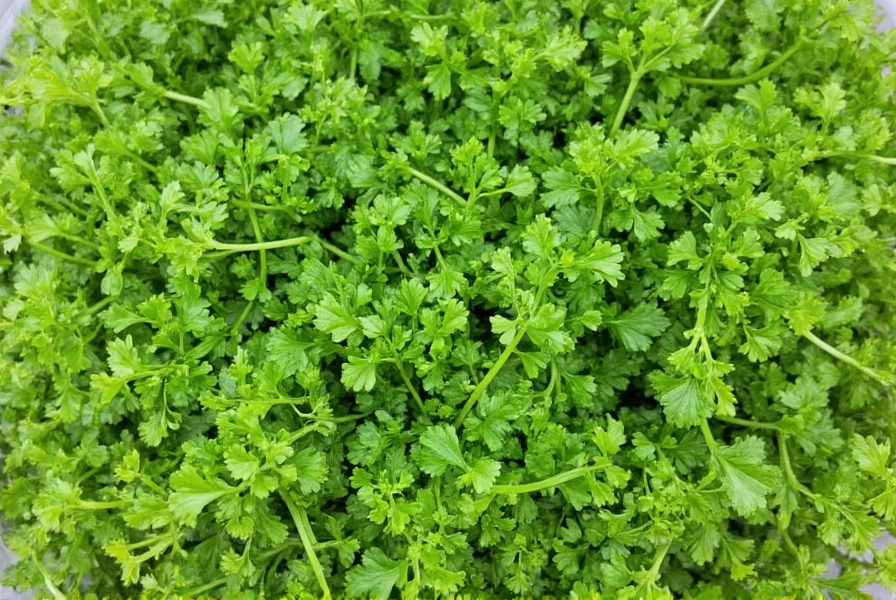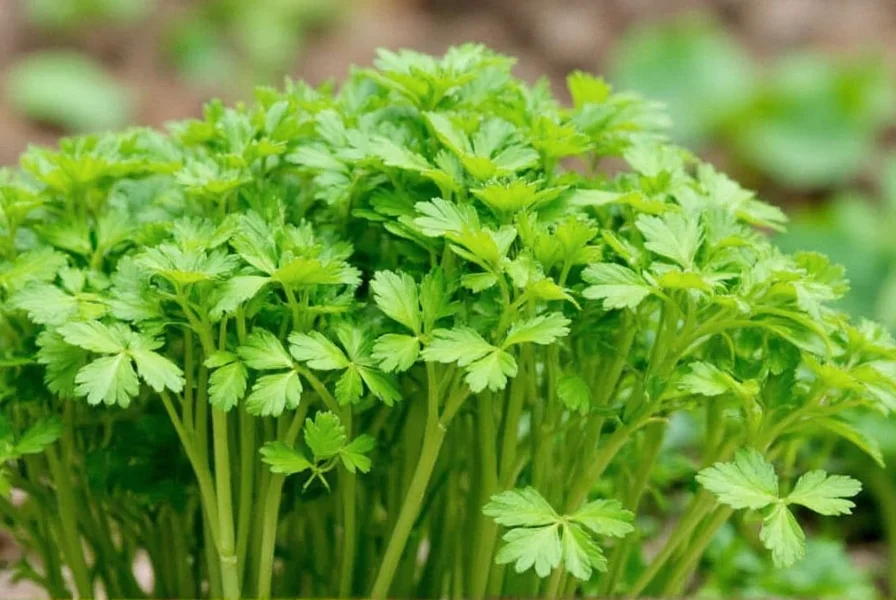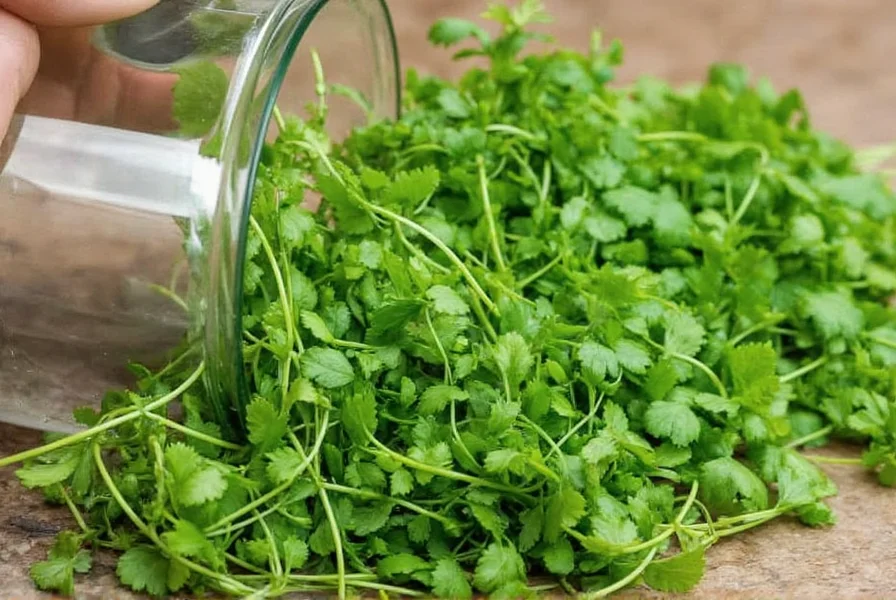Harvest coriander leaves when plants reach 6-8 inches tall, ideally in the morning when essential oils peak. For continuous growth, cut outer stems 1-2 inches above soil, never removing more than one-third of the plant. Harvest coriander seeds when seed heads turn brown but before they dry completely and scatter.
Coriander (Coriandrum sativum), known as cilantro when referring to its leaves, is a versatile herb prized for both its fresh foliage and aromatic seeds. Proper harvesting techniques significantly impact flavor quality, plant longevity, and overall yield. Whether you're growing this herb in your garden or containers, understanding the nuances of harvesting coriander ensures you maximize your plant's potential throughout its lifecycle.
Understanding Coriander's Dual Harvest Potential
Many gardeners don't realize coriander offers two distinct harvest opportunities from the same plant. The leafy greens (cilantro) provide fresh flavor for culinary applications, while the mature seeds (coriander) deliver warm, citrusy notes essential in spice blends. Recognizing these dual harvest phases transforms your gardening approach from seasonal to strategic.
Optimal Timing for Leaf Harvesting
Timing determines flavor intensity and plant resilience. For the most aromatic leaves:
- Begin harvesting when plants reach 6-8 inches in height
- Harvest in early morning when essential oils are most concentrated
- Before flowering (bolting), which typically occurs when temperatures exceed 75°F (24°C)
- During cooler seasons for extended leaf production
As temperatures rise, coriander naturally shifts energy toward seed production, causing leaves to develop a soapy flavor many find unpleasant. Strategic harvesting before this transition preserves optimal leaf quality.

Step-by-Step Leaf Harvesting Technique
Proper technique ensures plant health and continuous production:
- Identify mature outer stems (6-8 inches long)
- Using sharp scissors or pruning shears, cut stems 1-2 inches above soil level
- Never remove more than one-third of the plant's foliage at once
- Focus on outer growth first, allowing inner stems to mature
- Harvest regularly every 7-10 days to encourage bushier growth
This selective harvesting method, sometimes called "cut-and-come-again" technique for harvesting coriander, stimulates lateral growth while preventing premature bolting. Plants respond to this careful pruning by producing more stems, effectively doubling your harvest potential compared to single harvest methods.
Seed Harvesting: From Flower to Mature Coriander
When coriander transitions to seed production, follow this timeline:
| Stage | Visual Indicators | Timeline After Flowering | Action Required |
|---|---|---|---|
| Flowering | White or pale pink umbels appear | 0-7 days | Reduce watering slightly |
| Early Seed Formation | Green seed heads develop | 2-3 weeks | Support tall stems with stakes |
| Maturation | Seed heads turn light brown | 4-6 weeks | Place paper bags over heads |
| Harvest Ready | Seeds dry and harden to beige | 6-8 weeks | Collect seeds in bags |
The critical window for harvesting coriander seeds before they scatter occurs when approximately 70% of seeds on a head have turned from green to beige. At this stage, cut entire seed heads and place them in paper bags to finish drying indoors, preventing seed loss from wind or birds.
Essential Tools for Effective Coriander Harvesting
While basic harvesting requires minimal equipment, these tools enhance precision and yield:
- Sharp bypass pruning shears (prevents stem crushing)
- Garden scissors for delicate leaf harvesting
- Breathable harvest containers (wicker baskets or paper bags)
- Small paper bags for seed collection
- Gloves for handling mature plants (reduces oil transfer)
Avoid plastic containers during harvest, as they trap moisture and accelerate wilting. The best containers for harvesting fresh coriander leaves maintain airflow while protecting delicate foliage from bruising.
Post-Harvest Plant Care for Continuous Production
What you do after harvesting determines future yields:
- Water lightly after leaf harvesting to reduce plant stress
- Apply balanced liquid fertilizer every 3-4 harvests
- Remove any yellowing leaves to prevent disease spread
- For continuous leaf production, pinch off flower stalks immediately
- Mulch around base to maintain consistent soil moisture
Plants harvested using proper techniques for harvesting coriander without damaging the plant often produce for 3-4 months in ideal conditions. In cooler climates, succession planting every 2-3 weeks ensures a continuous supply.
Storing Your Coriander Harvest
Different preservation methods suit different harvest types:
Leaf Storage
- Short-term (1-2 weeks): Place stems in water like cut flowers, cover loosely with plastic bag, refrigerate
- Medium-term (2-3 weeks): Wrap in slightly damp paper towels inside airtight container
- Long-term (6+ months): Chop leaves, freeze in ice cube trays with water or oil
Seed Storage
- Air-dry seeds completely before storage (1-2 weeks in paper bag)
- Store in airtight glass container away from light and heat
- Properly stored coriander seeds maintain potency for 1-2 years
Never wash coriander before storage, as excess moisture accelerates spoilage. The proper way to store freshly harvested coriander preserves essential oils that deliver its distinctive flavor.

Common Harvesting Mistakes and Solutions
Avoid these frequent errors that reduce yield and plant health:
Mistake: Harvesting Too Much at Once
Solution: Follow the one-third rule—never remove more than one-third of the plant's foliage during a single harvest session. This maintains sufficient leaf surface for photosynthesis and prevents shock.
Mistake: Harvesting During Peak Heat
Solution: Schedule harvesting for early morning when temperatures are cooler and essential oils are most concentrated. Midday harvesting in hot weather stresses plants and diminishes flavor quality.
Mistake: Ignoring Bolting Signs
Solution: When flower stalks begin forming, increase harvesting frequency. If flowering progresses, decide whether to prioritize leaf production (pinch flowers) or seed collection (allow maturation).
Mistake: Improper Seed Collection Timing
Solution: Harvest seed heads when 70% have turned beige but before they fully dry on the plant. Use paper bags over heads to catch naturally falling seeds during final maturation.
Troubleshooting Poor Harvest Results
Address these common harvesting challenges:
Problem: Bitter or Soapy-Tasting Leaves
Causes: Heat stress, over-maturity, or genetic factors
Solutions: Harvest earlier in the plant's lifecycle, provide afternoon shade in hot climates, or try different cultivars like 'Slo-Bolt' bred for delayed bolting.
Problem: Sparse Regrowth After Harvesting
Causes: Over-harvesting, nutrient deficiency, or improper cutting height
Solutions: Ensure cuts are made at least 1-2 inches above soil to preserve growth nodes, apply balanced fertilizer, and allow 10-14 days between harvests during recovery periods.
Problem: Premature Seed Scattering
Causes: Delayed harvesting or windy conditions
Solutions: Place paper bags over seed heads when 60-70% have matured, harvest seed heads slightly early and finish drying indoors, or grow plants in sheltered locations.
Maximizing Your Coriander Harvest Through the Seasons
Understanding seasonal patterns helps optimize your harvesting schedule:
- Spring planting: Harvest leaves continuously until hot weather triggers bolting
- Summer planting: Focus on quick leaf harvests before rapid bolting occurs
- Fall planting: Enjoy extended leaf production as cooler temperatures delay flowering
- Winter harvesting: In mild climates, maintain small plants for regular leaf collection
For gardeners in regions with distinct seasons, the best time of year for harvesting coriander leaves is during cool spring and fall months when plants remain in vegetative growth longer. In warmer climates, consider partial shade and regular harvesting to extend the leaf production phase.
Conclusion: Mastering the Art of Coriander Harvesting
Successful coriander harvesting blends timing, technique, and plant awareness. By understanding the plant's natural progression from leaf production to seed formation, you can strategically harvest to meet your culinary needs while maintaining plant health. Whether you're collecting fresh cilantro for salsa or gathering coriander seeds for spice blends, applying these evidence-based harvesting methods ensures maximum flavor, yield, and gardening satisfaction. Remember that each harvest session represents an opportunity to strengthen your relationship with this versatile herb, creating a sustainable cycle of growth and abundance in your garden.
How often can I harvest coriander leaves without harming the plant?
You can harvest coriander leaves every 7-10 days during active growth periods, provided you follow the one-third rule—never removing more than one-third of the plant's foliage at once. Allow 10-14 days between harvests during recovery periods or in stressful conditions. Proper harvesting actually stimulates growth, with many plants producing for 3-4 months when harvested correctly.
Should I harvest coriander before or after it flowers?
Harvest leaves before flowering for optimal flavor, as bolting causes leaves to develop a soapy taste. Once flowering begins, you have two options: pinch off flower stalks to extend leaf production, or allow flowering to complete for seed harvesting. The plant cannot maximize both leaf and seed production simultaneously, so choose based on your primary need.
What's the best way to know when coriander seeds are ready for harvest?
Coriander seeds are ready when approximately 70% of seeds on a head have turned from green to beige or light brown, but before they become fully dry and hard. The seed heads will feel slightly papery but still retain some moisture. Harvest at this stage by cutting entire seed heads and placing them in paper bags to finish drying indoors, preventing seed loss from premature scattering.
Can I harvest coriander year-round in containers?
Yes, container-grown coriander can provide year-round harvests with proper management. Keep plants in a location with 4-6 hours of sunlight, maintain consistent moisture, and harvest regularly using the cut-and-come-again method. In winter, move containers to a sunny windowsill or greenhouse. Succession planting every 3-4 weeks ensures continuous supply, as individual plants typically remain productive for 2-3 months.
Why do my harvested coriander leaves wilt so quickly?
Coriander leaves wilt rapidly due to their high moisture content and thin cell structure. To extend freshness, harvest in the morning, avoid washing before storage, and store stems upright in water like cut flowers with a loose plastic cover. Refrigeration at 32-36°F (0-2°C) with high humidity (90-95%) provides optimal conditions. Never store coriander near ethylene-producing fruits like apples or bananas, which accelerate spoilage.











 浙公网安备
33010002000092号
浙公网安备
33010002000092号 浙B2-20120091-4
浙B2-20120091-4